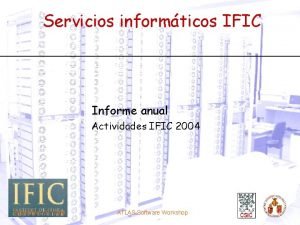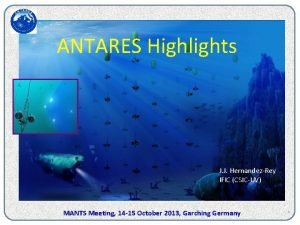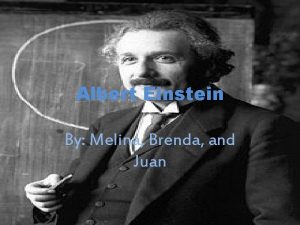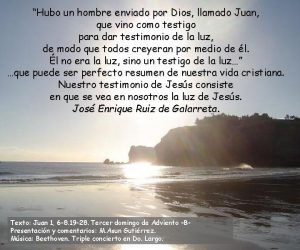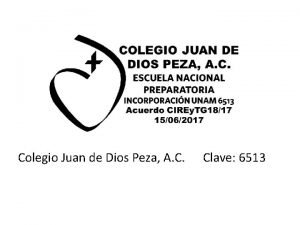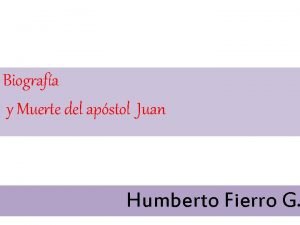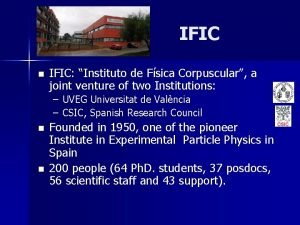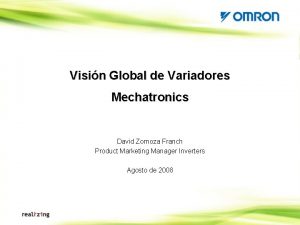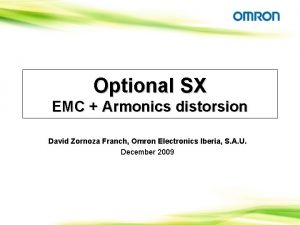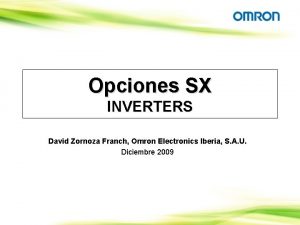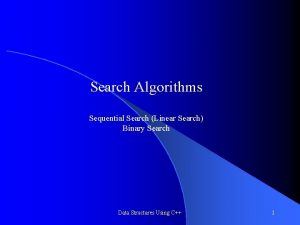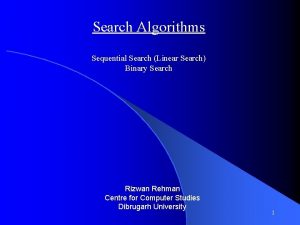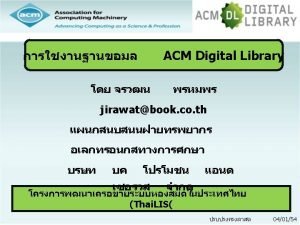Juan de Dios Zornoza IFIC CSICUV SEARCH FOR



























- Slides: 27

Juan de Dios Zornoza, IFIC (CSIC-UV) SEARCH FOR POINT SOURCES WITH THE ANTARES NEUTRINO TELESCOPE

Outline The ANTARES telescope Search methods Likelihood ratio (LLR) Expectation-Maximization (EM) (also a binned method, not discussed here) Results

ANTARES detector Shore station (La Seyne sur Mer) • The detector is located in the Mediterranean Sea (42º 50’N, 6º 10’E) at 2500 m depth, off the coast of Toulon (France). • It consists of 885 PMTs distributed along 12 lines anchored at the bottom of the sea. Submarine Cable 2500 m • The ANTARES detector observes 3. 5 sr (0. 6 sr overlap with AMANDA/Ice. Cube). • The Galactic Centre is observable 67% of the day. Visibility Mkn 501 RX J 1713. 7 -39 SS 433 GX 339 -4 Galactic Centre CRAB VELA

Detection principle o The neutrino is detected by the Cherenkov light emitted by the muon produced in a CC interaction. W N 1. 2 Te. V muon traversing ANTARES X

Neutrino candidate Example of a reconstructed upgoing muon (i. e. a neutrino candidate) detected in 6/12 detector lines: height time

Search for point sources The search for point sources is based on algorithms looking for clusters of events over the background. Three algorithms have been used: Likelihood ratio (unbinned) Expectation-Maximization (unbinned) Cone search (binned), not discussed here The analysis presented here are based on the data of 2007, when 5 lines were installed (140 active days)

Likelihood ratio (LLR) The method is an unbinned method based on a likelihood ratio maximization Goal: search at a given point, called “Search-Point”, the number of signal events for a given BG model The method has 2 steps: • Calculation of the angular distance between the Search. Point and all events in the Sky • Fit the distribution with the Signal and BG Probability Density Functions (PDFs) using the likelihood ratio maximization technique Use the maximized likelihood ratio, λ, as a statistic test

Statistic test λ nsig is the only free parameter 8

Probability Density Functions μ (reconst ructed) ν (M onte -Ca rlo t r Signal PDF uth) BG PDF 9

Fit 10

Algorithm output Statistic test λ for different models Fitted number of signal events 11

Selection cuts Cuts are chosen to optimize sensitivity: Nlines≥ 2 Nhits>5 Bchi 2>2. 2 Tchi 2<1. 8 if rec<80º and tchi 2<1. 4 if 90º< rec<80º Fit to a line Fit to a sphere 276 events are selected

Performance of the detector Effective area (E-2) Angular resolution* Event Rate = Eff. Area x Flux *The best reconstruction (ang. res. ~0. 3 deg) algorithm showed some data/MC discrepancies, which are now fixed ( 12 line data)

Data-MC comparisons Zenith (tchi 2 ≤ 1. 8 & bchi 2 ≥ 2. 2) Declination (optimized cuts)

Limits and discovery power Limit in the number of events Discovery power

Discovery power and number limit Number of events needed to Probability of a a 3 / 5 have a 50% probability of having discovery as a function of the a a 3 / 5 discovery as a number of events function of declination

Skymap (galactic coordinates) of the selected events (red points) and the candidate sources (blue crosses)

Results of for candidate sources (LLR) Source RA δ l b Visibility p-value Pretrial Sigma HESS J 0632+057 6 h 32 m 58 s 5 o 48’ 20’’ 205. 66 -1. 44 0. 46 0. 081 1. 4 RX J 0852. 0 -4622 8 h 52 m HESS J 1023 -575 10 h 23 m PSR B 1259 -63 00 s (1 side) -46 o 22’ 00’’ 266. 28 -1. 24 0. 91 0. 007 2. 5 -57 o 45’ 50’’ 284. 19 -0. 39 1. 00 0. 0014 3. 0 13 h 02 m 49 s -63 o 50’ 02’’ 304. 19 -0. 99 1. 00 - - RCW 86 14 h 42 m 43 s -62 o 29’ 00’’ 315. 79 -1. 46 1. 00 0. 182 0. 9 Cir X-1 15 h 20 m 41 s -57 o 10’ 00. 26’’ 322. 12 0. 04 1. 00 - - HESS J 1614 -518 16 h 14 m 19 s -51 o 49’ 12’’ 331. 52 0. 58 1. 00 - - GX 339 17 h 02 m 49 s -48 o 47’ 23’’ 338. 94 -4. 33 0. 99 - - RX J 1713. 7 -3946 17 h 13 m 00 s -39 o 45’ 00’’ 347. 28 -0. 38 0. 75 - - Galactic Center 17 h 45 m 41 s -29 o 00’ 22’’ 359. 95 -0. 05 0. 66 0. 048 1. 7 W 28 18 h 01 m 42 s -23 o 20’ 06’’ 6. 66 -0. 27 0. 62 - - LS 5039 18 h 26 m 15 s -14 o 49’ 30’’ 16. 90 -1. 28 0. 57 - - HESS J 1837 -069 18 h 37 m 38 s -6 o 57’ 00’’ 25. 18 -0. 12 0. 52 - - SS 433 19 h 11 m 50 s 4 o 58’’ 39. 69 -2. 24 0. 48 - - RGB J 0152+017 1 h 52 m 40 s 1 o 47’ 19’’ 152. 38 -26. 61 0. 49 - - 1 ES 0347 -121 3 h 49 m 23 s -11 o 59’ 27’’ 201. 93 -45. 71 0. 55 - - 237. 56 -26. 14 0. 69 - - 29’ 31’’ 273. 19 33. 08 0. 62 - - 18 s PKS 0548 -322 5 h 50 m 1 ES 1101 -232 11 h 03 m 3 C 279 12 h 56 m 11 s -5 o 47’ 21’’ 305. 10 57. 06 0. 51 - - Centaurus A 13 h 25 m 27. 6 s -43 o 01’ 08. 8’’ 309. 52 19. 46 0. 81 - - ESO 139 -G 12 17 h 37 m 39. 5 s -59 o 56’ 29’’ 334. 04 -13. 77 1. 00 - - PKS 2005 -489 20 h 09 m 29 s -48 o 49’ 19’’ 350. 39 -32. 61 1. 00 0. 100 1. 3 PKS 2155 -304 21 h 58 m 53 s -30 o 13’ 18’’ 17. 74 -52. 25 0. 67 - - G. Halladjian -78. 04 – Pt. Src. 5 L BBfit 0. 67 - - H 2356 -309 40. 6 s 38 s 23 h 59 m 08 s -32 o 16’ 16. 4’’ -23 o -30 o 37’ 39’’ 12. 84 18

All sky search Maximized likelihood ratio value in equatorial coordinates. Brightest point: RA = 222. 1º, = -9. 5º, p-value = 0. 31

Expectation Maximization The EM method is a pattern recognition algorithm that maximizes the likelihood in finite mixture problems, which are described by different density components (pdf) as: pdf signal: RA, bg: only position of event proportion of signal and background The idea is to assume that the set of observations forms a set of incomplete data vectors. The unknown information is whether the observed event belongs to a component or another. zi is the probability that the event comes from the source

Model Selection in EM The parameter used for discriminating signal versus background is the Bayesian Information Criterion, which is the maximum likelihood ratio with a penalty that takes into account the number of free parameters in the model weighed by the number of events in the data sample. D: data set 0: parameters of bg 1: parameters of signal M: model k: number of parameters to be estimated BIC distribution for different number of sources events added (at =-80 ), compared with only background

Declination (deg) RA (deg) p-value BIC (EM) - 63. 83 195. 7 - -17. 2482 - 62. 48 220. 68 0. 3549 -16. 4863 -59. 94 264. 41 - -17. 2482 -57. 76 155. 83 0. 0032 -5. 6025 -57. 17 230. 17 - -17. 2482 -51. 82 243. 58 - -17. 2482 -48. 82 302. 37 0. 145 -14. 5976 -48. 79 255. 70 0. 3655 -16. 7197 -46. 37 133 0. 4466 -17. 0732 -43. 02 201. 37 0. 4702 -17. 2021 -39. 75 258. 25 - -17. 2482 -32. 27 87. 67 - -17. 2482 -30. 63 359. 78 0. 4233 -17. 1617 -30. 22 329. 72 - -17. 2482 -29. 01 266. 42 0. 0454 -11. 8406 -23. 49 165. 91 - -17. 2482 -23. 34 270. 43 0. 007 -7. 54282 -14. 83 276. 56 0. 1563 -14. 8898 -11. 99 57. 35 - -17. 2482 -6. 95 279. 41 - -17. 2482 -5. 79 194. 05 - -17. 2482 1. 79 28. 17 0. 2563 -16. 1335 4. 98 287. 96 - -17. 2482 5. 81 98. 24 0. 0767 -13. 1885 Results for list of candidates (EM) Similar results than with LLR The same cluster is found as the most significant one

Flux limits Both algorithms give similar results Flux limits with 5 lines (140 active days) are close to those of MACRO With 12 –lines and 2 year data (already in disk!) the sensitivity is beyond any previous limit for the Southern Sky Official result (LLR) Alternative algortihm (EM)

Conclusions first Spain’s point source ANTARES has already been completed and is taking data for more than two years It completes the coverage of the neutrino sky, with an unsurpassed angular resolution Different algorithms have been used, showing similar performance Two kinds of searches have been performed: over a list of 24 candidate sources and an all-sky scan. First results with 2007 data show no evidence for neutrino point sources (most significant cluster has a post-trial P-value of 0. 036 at HESS J 1023 -575) Results with 2007 -2008 data (and best reconstruction algorithm) soon available

BACKUP

HESS J 1023 -575 Discovered by H. E. S. S. In 2007 by using 2006 data. Extended source: 0. 4 x 0. 4 deg 2 ( larger than H. E. S. S. Angular resolution). Un-identified source few possible source types inside, non of them has been proved as Te. V gamma source. = -57° 45´ 50´´ a = 10 h 23 m 18 s FERMI-LAT: pulsar PSR J 1023 -5746

Scientific scopes o o Detector size Origin of cosmic rays Hadronic vs. leptonic signatures Supernovae Oscillations Limitation at low energies: -Short muon range -Low light yield -40 K (in water) Me. V Dark matter (neutralinos) Astrophysical neutrinos Limitation at high energies: Fast decreasing fluxes E-2, E-3 GZK, Topological Defects Ge. V Te. V Pe. V Detector density Other physics: monopoles, etc. . . Ee. V
 Casa museo quevedo zornoza
Casa museo quevedo zornoza Horde csic
Horde csic Itu br ific
Itu br ific Br ific
Br ific Juan juan studio melina
Juan juan studio melina Catalogo de vestido
Catalogo de vestido Colegio juan de dios peza
Colegio juan de dios peza No me mueve poema
No me mueve poema Juan es salvado por dios del aceite hirviendo
Juan es salvado por dios del aceite hirviendo Kontinuitetshantering i praktiken
Kontinuitetshantering i praktiken Typiska novell drag
Typiska novell drag Tack för att ni lyssnade bild
Tack för att ni lyssnade bild Ekologiskt fotavtryck
Ekologiskt fotavtryck Varför kallas perioden 1918-1939 för mellankrigstiden?
Varför kallas perioden 1918-1939 för mellankrigstiden? En lathund för arbete med kontinuitetshantering
En lathund för arbete med kontinuitetshantering Adressändring ideell förening
Adressändring ideell förening Personlig tidbok fylla i
Personlig tidbok fylla i Anatomi organ reproduksi
Anatomi organ reproduksi Förklara densitet för barn
Förklara densitet för barn Datorkunskap för nybörjare
Datorkunskap för nybörjare Stig kerman
Stig kerman Debattartikel mall
Debattartikel mall För och nackdelar med firo
För och nackdelar med firo Nyckelkompetenser för livslångt lärande
Nyckelkompetenser för livslångt lärande Påbyggnader för flakfordon
Påbyggnader för flakfordon Arkimedes princip formel
Arkimedes princip formel Offentlig förvaltning
Offentlig förvaltning I gullregnens månad
I gullregnens månad

